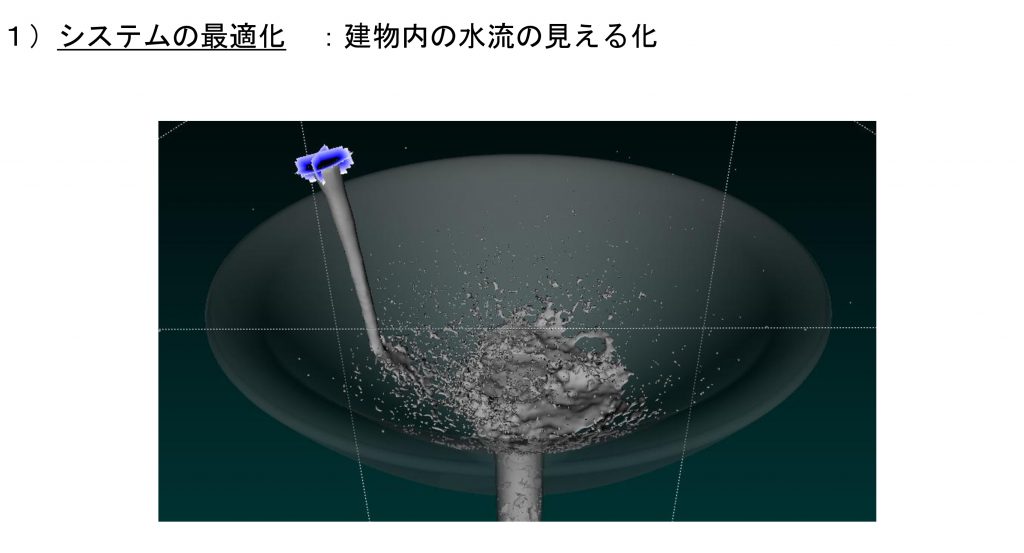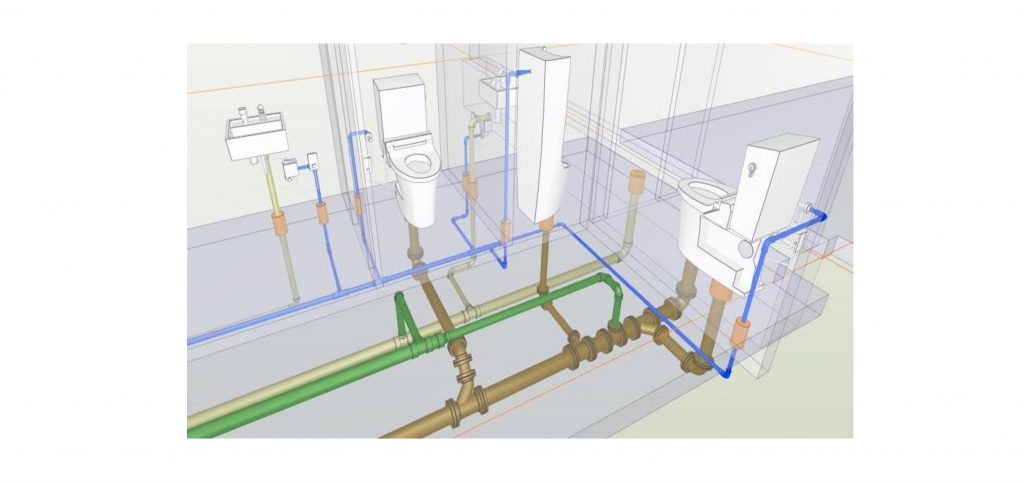Details of the Initiative
I make the water of architecture visible.
Water can be obtained as a matter of course by turning on a faucet, but energy is consumed in the process by using pumps and other devices. On the other hand, there are still things we don’t know about the behavior of water supply and drainage in buildings, so plans with flexibilities must be made to avoid problems regarding what we don’t know. However, this is not an optimal plan without waste, and it can waste valuable energy and water.
Therefore, it is important to visualize and understand water in buildings in order to realize sanitary, water-saving, and energy-saving plumbing systems. To visualize water, this research uses simulation technology in addition to experiments in which water is actually flowed.
In fiscal 2020, I examined the state of splashing and running water while splashing water into washbasins, and studied the optimal shape of washbasins and their relationship to faucets by understanding the effects of the shape of drain outlets and the amount of water discharged.



